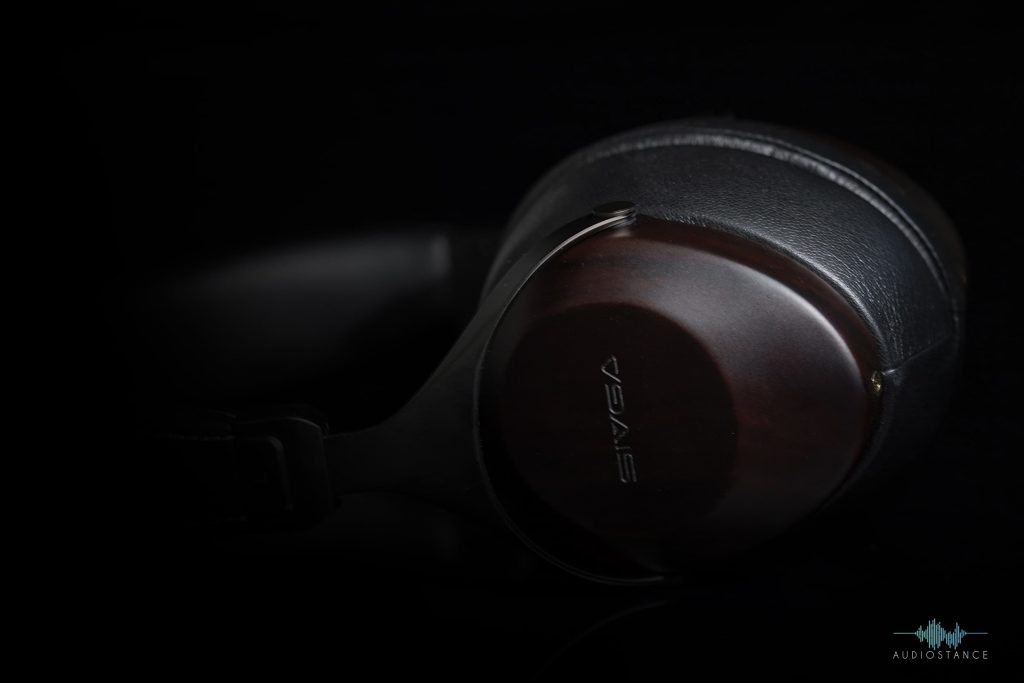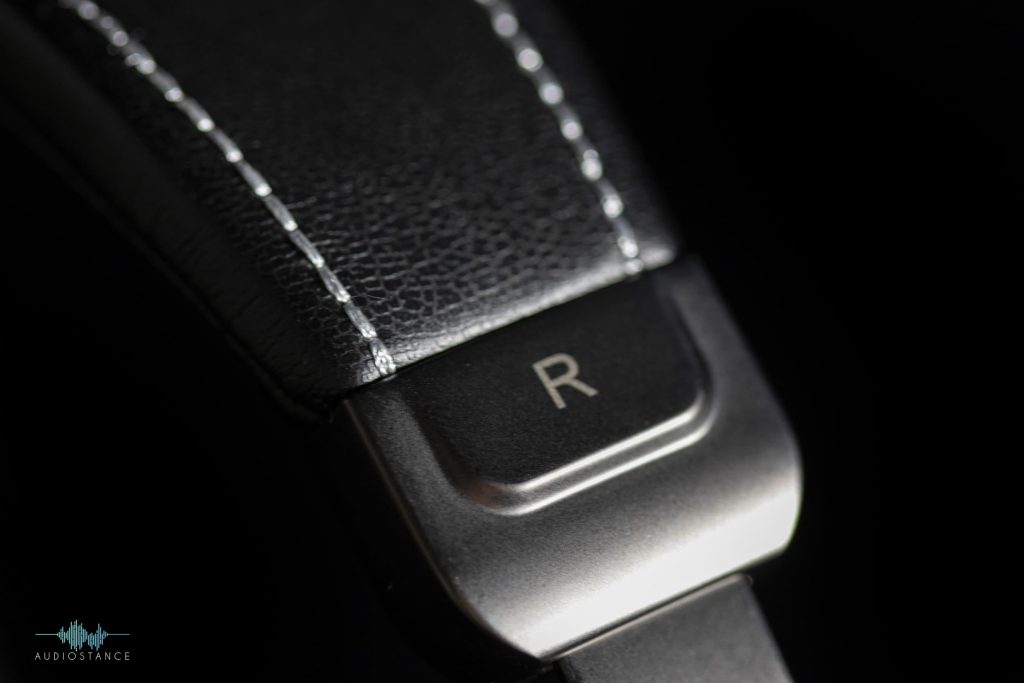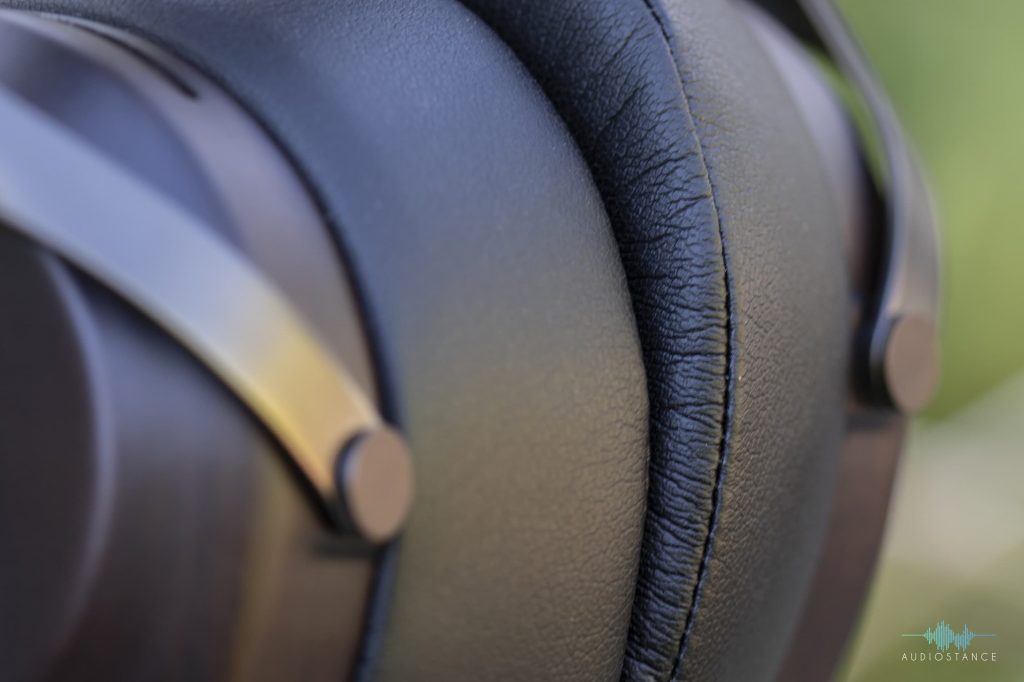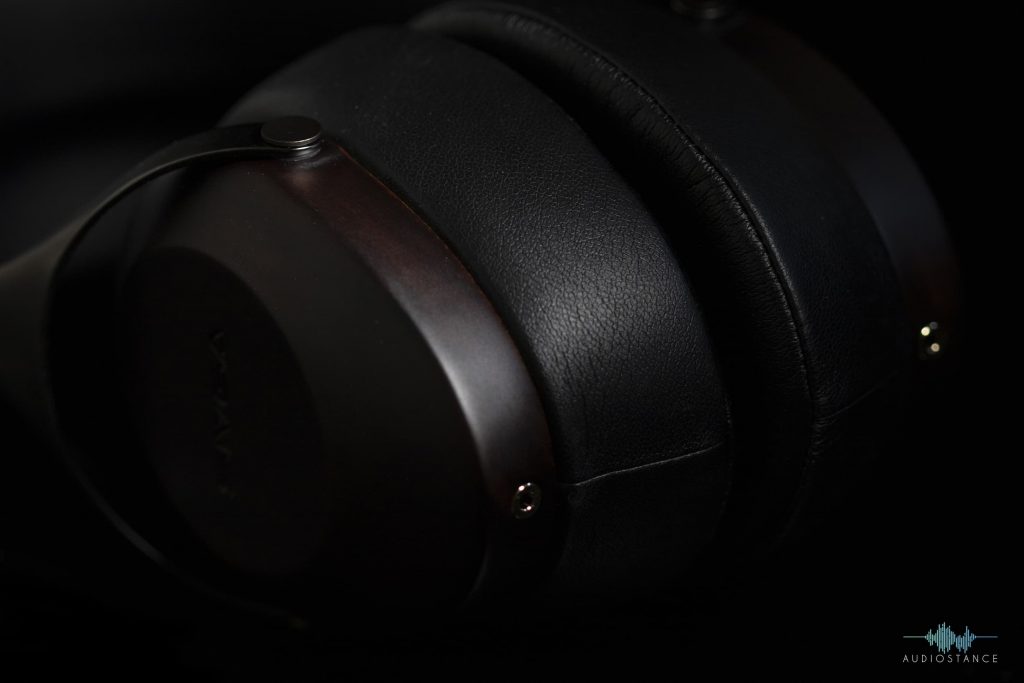The Low-Down!
The Sivga sv021 offers a reasonable closed-back option at under $200. The wooden-backed earcups offer a beautiful aesthetic, while the protein leather earcup padding provides an unbelievably comfortable experience. The sv021 isn’t flawless, though. While the sound quality is good, there is a slight lack of definition in the mids and noticeable peaks in the upper mids and treble.
Sivga sv021 Specs
Frequency Response
20Hz – 20kHz
Sensitivity
105dB
Open or Closed-Back
Closed-Back
Impedance
32Ω
Technical Specifications
| Connection Type | Wired |
| Drivers | 50mm Dynamic |
| Fit | Over-ear |
| Impedance | 32Ω |
| Frequency Response | 20Hz – 20kHz |
| Sensitivity | 105dB |
| Weight | 275g |
| Warranty | 12-Month |
| Materials | Wood, Protein Leather & Metal |
| Noise Cancellation | No |
One of the most polarizing headphones in the budget audiophile community, the Sivga Robin SV021 may not be the best pair of closed back headphones on the market, but they do a great job at providing comfort and audio quality concerns are unlikely to go noticed by the regular consumer. Given their price point it's tough not to recommend the sv201 to those who don't mind the less than flat sound signature.What We Scored It
Sound Quality - 67%
Comfort - 88%
Build & Design - 72%
Value - 76%
76%
The Sivga sv021 is a unique pair of headphones that has garnered a bit of a cult following due primarily to its unique design. Despite being priced at around $150, it offers reasonable quality and a great appearance.
The sv021 isn’t for everyone and I think that’s one of the most important parts of headphone recommendations to consider. We’ll run through these headphones in detail, highlighting where they excel and for whom they may fall a little short.
Initial testing was done without the use of an amplifier or DAC.
The Aesthetics
The design of the Sivga sv021 stands out from most other headphones on the market due to its wooden earcups which are available in both brown and black. The brown wood option is the most popular choice, pairing excellently with lighter wood room aesthetics, especially with the tan-colored headband. However, if you have a darker setup going on, the lighter tones of the brown version can easily feel out of place.
The black version is less exciting on the eye but blends well into darker setups and can easily find its place in most spaces. Despite being named black, the earcup still retains the woodgrain finish, just a much darker version that has a matte paint finish. So you will still get the accents that make wooden earcups so desirable. It is worth mentioning that in well-lit areas, fingerprints on the earcups can become quite visible.
The frame leading from the earcup to the headband is made from lightweight but durable metal, while the headband itself is constructed with high-quality protein leather, providing you with some extremely plush cushioning that feels amazing on the skin.
The inside of the earcups are covered in the same protein leather as the headband, and the headphones carry a very appealing balance in their visual traits. The wooden earcup coloration on both models accents the overall aesthetic of the headphone very nicely.

Build Quality
When it comes to the Chinese headphone market, Sivga stands out for its more craft approach to audio equipment. You’re not going to feel cheap plastic or loose contacts with these headphones. Instead, you’ll find an overall build quality that rivals many Western brands, at a lower price point. This is true, except for the cabling which I’ll discuss below.
One thing you’ll notice with the sv021 is that they are unbelievably light headphones. But don’t let the lightweight aspect fool you, the build quality surpasses a number of bulky, heavy headphones that I’ve used in the past.
Cables & Wiring
When I initially reviewed these headphones, I found the cables to be of moderate quality, but over time I have gone through 3 different pairs of these cables. I have had consistent issues with the wires inside the cables coming loose from the connection points. Sivga have in all cases been responsive to my support requests as a customer, and have sent me two different replacements for the cables that died. So while I am still unhappy about the problems these wires have, I have to give kudos to Sivga’s customer support.
One of the most frustrating parts about the Sivga SV021 is the difficulty in finding replacement cables that aren’t from Sivga. Each earcup uses its own 2.5mm TRS connection, which joins into a single 3.5mm jack.
Editor’s Note: I have adjusted my review of the cables and wiring to represent a more accurate portrayal of their quality over a long term period.
Earcups
The build quality of the earcups feels very good, with the wood showing very few imperfections if any. The padding around the cups is unbelievably soft, and while this softness lends to a feeling that it may be susceptible to wear, I haven’t seen other customers complaining about this.
Headband
The headband carries the same soft materials as the inner earcup and feels extremely sturdy and well-built overall. The headband doesn’t feel like it will be prone to easy damage. It also connects to the earcups with durable metal.

Comfort
Where does one even begin? The Sivga sv021 are some of the most comfortable headphones I have had the pleasure of wearing. As someone who wears a cap nearly all the time, finding comfortable headphones can be a challenge, especially in relation to the headband. However, the headband is extremely comfortable and works perfectly with a cap on, regardless of the headband position, a trait I’ve found rare in the affordable headphone market.
The sv021 manages to fit snug around the ears (even slightly big ears) while never feeling like a burden. The fact that these headphones weigh 275g is a massive positive to me. I know this is sometimes a contested point on some of the audiophile forums, as some seem to feel as though they are too light for their liking. I personally can’t see any downsides to the lightweight, especially because there isn’t a sacrifice in the way the headphones are constructed.
The earcups padding is the 3-ply of ear pads. It feels soft, gentle, and luxurious on the skin. I didn’t find any compression against my skin for my head size that could cause any discomfort. Despite this, the earcups still fitted flush.
One thing that could be of a nuisance is that each earcup plugs into its own wire, which is split from the primary cable. While I haven’t yet encountered any annoyances with them, I could see this being a little annoying for someone who has them plugged in directly in front of their sitting location, for instance.

Sound Quality
The sound quality of the Sivga Robin sv021 is reasonable for the price bracket that it falls into, but depending on what you use these headphones for – they may fall short of the hype created in the various existing reviews online.
In a nutshell, the sv021 provides a close and intimate audio experience, which works well when paired with genres like jazz, but it lacks some of the nuances that make music so great to listen to. The midrange comes across a little muddy in places, where instruments sound stacked ontop of each other. When I compare the performance to my similarly priced open-back alternative, the Philips Fidelio X2HR, I can immediately notice the lack of separation from the Sivga.
That’s not to say the Sivga sounds bad. They have a certain appealing quality to them, and they do well with certain mixes. But if the lack of separation remains my biggest gripe. This is most true when comparing the performance of the SV021 with open-back headphones – but even as a closed-back, there are objective drawbacks present with the SV021.
While this encapsulates the experience for me, it’s also not to say they aren’t versatile – because they can certainly compete and even outshine other closed-back models in this price range.
Soundstage
Again, as these are closed-back headphones, one needs to be a little forgiving on the soundstage performance in comparison to some of the open-back headphones in this bracket. Overall I found that the soundstage was enough for most genres of music, but when venturing into psytrance, for instance, I felt like there were elements that are produced and mixed to be extremely wide sounding and fully encompassing, but felt restricted by that intimate aspect of the sound.
I’ve seen a lot of recommendations for the Sivga around electronic music, but I personally would perhaps recommend the Beyerdynamic DT770 if having that extremely wide, spacey, and ethereal sound.
This doesn’t mean that electronic music sounds bad on these headphones because it doesn’t. It’s just more of an intimate experience than one of audio exploration and travel.

Frequency Response & Equalizing
A full frequency response range of 20Hz – 20kHz ensures that all frequencies available to the human ear are catered for. However, when it comes to the sound signature, the Sivga sv021 has become synonymous with a V-shape. However, they aren’t as pronounced as some other V-shape signatures and almost align a little more like a W-shape. The mids can fall a touch flat in comparison with the upper treble, but they mostly remain distinct and clear. I didn’t feel as though there were frequencies jostling for pole position, instead, it felt more like the mids were just barely in the race.
While the bass is certainly punchy, given that I was looking for a bit more of a kick – I ended up using EQ APO to bring the sub-bass (20-40Hz) up a touch, while also increasing the upper mid-range (900Hz-3kHz) a bit. Due to a bit pronounced sibilance, I actually brought the EQ down just a touch around the 4kHz-7kHz mark. The snares of this drum and bass track become almost painful until I dropped the 4kHZ-5kHZ range.
Many users prefer the factory sound for these headphones, so I wouldn’t recommend reaching for the EQ software immediately, but knowing that it’s there provides comfort in knowing you can easily tailor the sound to your own liking. After all, music is an art and we all have our subjective preferences.
Volume
Out of the box, these headphones are loud! While volume doesn’t dictate quality, I’ve had experiences in the past where I enjoyed the general sound quality but it just didn’t pack the volume I personally look for in a headphone. I’ve been running the Sivga sv021 with about 25% system volume and even that can sometimes become a bit much. You won’t have to worry about a lack of volume on these in the slightest.
Noise Isolation
There is no noise cancelation on the Sivga sv021, but the passive isolation does a good job at both preventing leakage and reducing environmental noise. You’re not going to be annoying coworkers from across the office, but there is a small leak of sound when the volume is pushed up.
Music Tests
My favorite part of testing new audio is running through several genres of music and seeing how they perform with different instruments and mixing. Below are some of the tracks I tested the Sivga sv021 with and my impressions of the performance and general experience from each of those tracks.
This legendary trance classic from the ’90s comes across as a little hit and miss on the sv021. The strings and bass are both really solid, and even though I could have used a little more sub-bass, it really sounded good in the lower frequencies. Unfortunately, the piano falls a little flat and just sounds tired and lacking the life that really makes this song pop. It still manages to retain a wide sound thanks to the heavy reverb in the production.
If you’re just listening to the song, the Sivga does great justice with the close, warm and intimate sound we talked about before. It really feels like a live music experience. However, there is again a slight numbness to the mid-frequencies and a touch of sibilance present.
The entire instrumental journey that is Schism, sounds pretty damn good with these headphones. However, there seems to be a slight lack of definition in Maynard James Keenan’s vocals, except for when he raises his voice up in register. I found the easiest fix for this was to follow the same EQ approach I have been, and that is to raise things in the 1000-2000Hz range.
With Mozart’s Requiem, K. 626 Lacrimosa, there is always a sense of what could be, as the grand orchestral elements seem a bit contained and trapped, again by the intimacy of the sound. This is perhaps the best-sounding example of where the Sivga falls short. With the negative out the way, the song sounds great overall with a little less noticeability on the mids. One can’t hear any painful oversaturated highs, even in the violins, at least to my ears.
Conclusion
When it comes to closed-back headphones under $200, the Sivga sv021 is a very promising offering. Not only do you get some great sound quality, but the aesthetics of the wooden earcups are a rare treat in this price bracket. In addition, the comfort of these headphones can battle it out with the best of them.
If an extremely wide soundstage is of priority, there are better options in the open-back headphone market, even around this price range.
They aren’t flawless though. The Sivga sv021 suffers a bit in the mid-frequency ranges and also could provide more in the sub-bass levels, especially when compared to some of the better bass-heavy headphones on the market. The good news is though, with some simple EQ software it’s really easy to dial these downfalls back and create a very impressive overall sound.
I would not suggest buying these headphones if you’re looking for a neutral sound, as there is a distinct signature that while playful and vibrant, may not be everyone’s cup of tea. That is what the Sivga sv021 really boils down to, a rather polarizing pair of headphones that can meet all the expectations or completely disappoint. It depends entirely on what you’re looking for in your headphones.
Editor’s Notes – 12 Months Later
Coming back to the Sivga sv021 a year after my initial review experience, I have adjusted my review to reflect my experiences as an owner. I have amended by comments around the cable quality, which has given me fairly consistent problems. I have also adjusted my review to reflect the performance of the SV021 with use of a DAC, adjusting some comments around audio performance.





